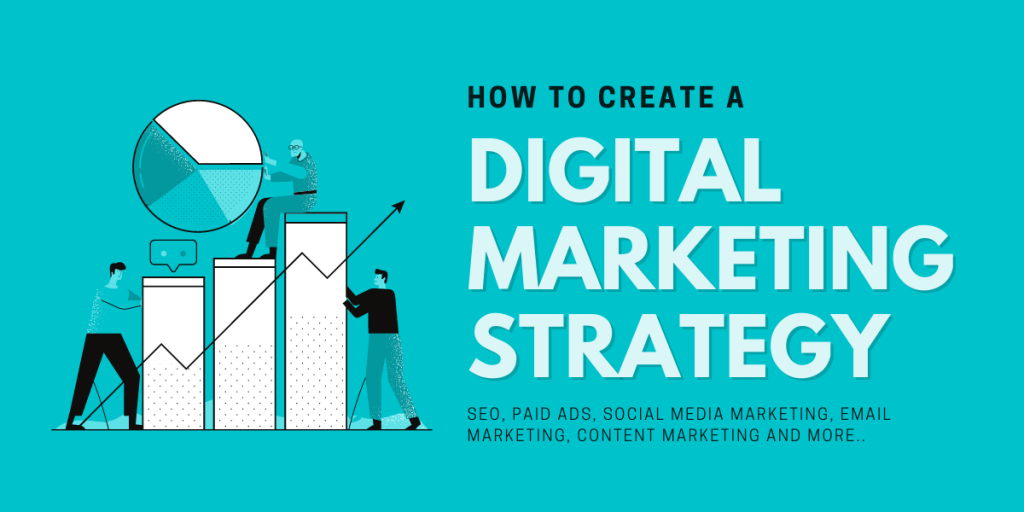In the world of digital marketing, success hinges on one critical factor: understanding the customer journey. The customer journey refers to the complete experience your customers go through when interacting with your brand, from the moment they first become aware of your product or service to when they make a purchase and beyond. A deep understanding of the customer journey allows marketers to craft tailored strategies that drive conversions, enhance customer satisfaction, and boost brand loyalty.
This comprehensive guide explores the different stages of the customer journey, the importance of mapping it, and the digital marketing strategies needed to engage your audience at every step.
1. Introduction to the Customer Journey in Digital Marketing
The customer journey describes the series of interactions a customer has with a brand before making a purchasing decision and continuing through the post-purchase experience. In digital marketing, this journey has become more complex due to the numerous touchpoints—social media, websites, email, paid ads—that influence customer decisions.
Understanding the customer journey is crucial because it allows businesses to:
- Deliver relevant content at the right time.
- Personalize experiences for their audience.
- Increase conversions by guiding customers through the sales funnel.
Why It Matters
A well-mapped customer journey reveals key opportunities to influence decisions, improve customer experiences, and ultimately drive revenue.
2. Stages of the Customer Journey
The customer journey is typically broken down into four key stages, each representing a different mindset of the customer and requiring distinct digital marketing strategies.
1. Awareness Stage
At the top of the funnel, the awareness stage is when potential customers first become aware of your brand, products, or services. They are not ready to buy yet but are looking for information to address a need or problem.
Digital Marketing Strategies for the Awareness Stage:
- Content Marketing: Create blog posts, eBooks, infographics, and videos that educate and provide solutions to your audience’s pain points.
- SEO: Use search engine optimization (SEO) to ensure your content ranks well for relevant keywords, helping customers find your business organically.
- Social Media: Leverage social media platforms to share content, engage with your audience, and build brand awareness.
- Paid Ads: Use PPC (pay-per-click) advertising or social media ads to target specific audiences searching for solutions related to your offerings.
2. Consideration Stage
During the consideration stage, customers are evaluating their options. They’re aware of your brand and others and are comparing products or services to make an informed decision.
Digital Marketing Strategies for the Consideration Stage:
- Email Marketing: Use email campaigns to nurture leads by sending personalized, educational content that helps them evaluate their options.
- Product Comparisons: Offer product comparisons, case studies, or demo videos to highlight what sets your offerings apart from competitors.
- Retargeting Ads: Use retargeting ads to stay top-of-mind with visitors who have interacted with your website but haven’t yet converted.
3. Decision Stage
The decision stage is where customers are ready to make a purchase. At this point, they are deciding between your brand and one or two competitors.
Digital Marketing Strategies for the Decision Stage:
- Testimonials and Reviews: Showcase positive reviews and customer testimonials to build trust and credibility.
- Discounts and Offers: Offer incentives like discounts, free trials, or free shipping to encourage purchase decisions.
- Clear CTAs: Ensure that your website has clear and compelling calls-to-action (CTAs) that guide customers toward making a purchase.
4. Post-Purchase Stage
After the sale, the customer journey continues. The post-purchase stage focuses on delivering a great customer experience and building loyalty to encourage repeat business and referrals.
Digital Marketing Strategies for the Post-Purchase Stage:
- Customer Support: Provide excellent customer service through FAQs, live chat, or follow-up emails.
- Loyalty Programs: Implement loyalty programs to reward repeat customers and incentivize further purchases.
- Personalized Content: Send personalized emails or product recommendations to keep customers engaged.
3. Mapping the Customer Journey
Mapping the customer journey is a visual representation of the steps a customer takes when interacting with your brand. This helps businesses better understand customer behaviors, identify pain points, and improve their marketing strategies.
How to Create a Customer Journey Map
- Identify Buyer Personas: Start by creating detailed buyer personas. These are fictional representations of your ideal customers, including demographics, interests, and buying behaviors.
- List Touchpoints: Identify every interaction a customer has with your brand, from discovering your website to post-purchase follow-ups.
- Understand Customer Pain Points: Pinpoint any challenges or concerns customers may have at each touchpoint, allowing you to optimize their experience.
Benefits of Customer Journey Mapping
- Improved Customer Experience: Mapping helps you identify gaps in your customer’s experience that you can fill with valuable content or support.
- Better Personalization: By understanding where customers are in their journey, you can deliver personalized content and offers.
- Enhanced Marketing ROI: A clear journey map helps allocate resources more effectively, focusing efforts on the touchpoints that yield the best results.
4. Digital Marketing Strategies for Each Stage of the Customer Journey
Crafting tailored digital marketing strategies for each stage of the customer journey can significantly improve engagement and conversion rates.
Awareness Stage
- SEO and Content Marketing: Focus on creating SEO-optimized content that educates and builds awareness around customer pain points. Blog posts, how-to guides, and videos can help customers at the top of the funnel.
Consideration Stage
- Email Nurturing Campaigns: Use personalized email sequences to guide leads through the consideration process with educational content, demos, or testimonials.
Decision Stage
- Retargeting Ads: Use retargeting ads to re-engage users who visited product pages but didn’t make a purchase.
Post-Purchase Stage
- Loyalty Programs: Implement loyalty programs to incentivize repeat purchases and foster long-term customer relationships.
5. Understanding Customer Touchpoints
Customer touchpoints are the various interactions a customer has with your brand across multiple channels. Understanding touchpoints is essential for creating a seamless customer journey and enhancing the user experience.
Key Digital Touchpoints
- Website: Ensure your website is user-friendly, fast, and optimized for conversions.
- Social Media: Use social media to engage with customers, answer questions, and share content.
- Email: Build relationships through personalized email campaigns.
6. Role of Analytics in Understanding the Customer Journey
Data analytics plays a crucial role in understanding the customer journey and optimizing digital marketing efforts.
Key Metrics to Track:
- Traffic Sources: Understand where your visitors are coming from (organic search, social media, email, etc.).
- Conversion Rates: Measure how many visitors convert into leads or customers at each stage.
- Bounce Rate: Analyze which pages are causing users to leave without taking action.
Tools to Use:
- Google Analytics: Offers insights into traffic sources, user behavior, and conversion rates.
- Heatmaps: Tools like Hotjar show where users click and scroll, helping you optimize page layouts and CTAs.
7. Omnichannel Marketing and the Customer Journey
An omnichannel marketing strategy integrates multiple channels to provide a seamless and consistent experience throughout the customer journey. This approach ensures that whether a customer interacts with your brand via social media, email, or your website, they receive the same messaging and value.
Benefits of Omnichannel Marketing:
- Consistency: Helps build trust by delivering a consistent brand experience across all channels.
- Better Engagement: Customers are more likely to engage with a brand that interacts with them on their preferred channels.
8. Personalization in the Customer Journey
Personalization involves tailoring your marketing messages and experiences based on customer data. This can significantly enhance the customer journey by making interactions more relevant and engaging.
Personalization Strategies:
- Email Personalization: Send personalized offers or content based on user behavior and preferences.
- Dynamic Website Content: Use customer data to display personalized content or product recommendations on your website.
9. Challenges in Understanding and Optimizing the Customer Journey
Despite its importance, understanding and optimizing the customer journey can present challenges. Common obstacles include fragmented customer data, disconnected touchpoints, and a constantly evolving digital landscape.
How to Overcome These Challenges:
- Unified CRM System: Use a CRM (Customer Relationship Management) system to centralize customer data.
- Continuous Improvement: Regularly analyze and refine your customer journey based on feedback and performance metrics.
10. Case Study: Successful Customer Journey Implementation
An example of a successful customer journey mapping can be seen with companies like Amazon. By using data-driven insights, Amazon personalizes recommendations, retargets abandoned carts, and provides a seamless omnichannel experience across web and mobile. This level of customer journey understanding has allowed Amazon to dominate in customer satisfaction and retention.
Conclusion
The customer journey is at the heart of any successful digital marketing strategy. By understanding and mapping out the various stages and touchpoints, you can create personalized, omnichannel experiences that guide customers through their journey—from awareness to post-purchase. Continual analysis and optimization of the customer journey will help you stay ahead of competitors and drive long-term business success.


